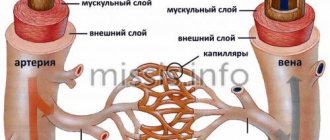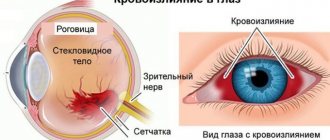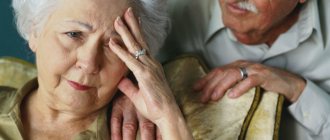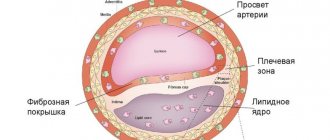Vessels are an integral part of the circulatory system. The blood flow in the body depends on their functioning. Some pathologies are characterized by rupture of blood vessels. In this case, spontaneous hematomas may appear. They occur either due to injury or due to internal disorders.
You need to understand that at the first manifestations of such a problem you should immediately consult a doctor. In a healthy person, blood vessels may occasionally burst under the influence of certain factors. However, this phenomenon is infrequent and manifests itself only as bruises. If hematomas occur constantly due to unknown reasons, then you need to visit a doctor. A phlebologist treats such problems.
Causes
Many people are interested in what a burst blood vessel on the hand looks like. This process manifests itself as bruises. Fragility of the bloodstream is most often observed in old age. This is due to the accumulation of salts, cholesterol and lipids. Accordingly, the vessels wear out, their functionality begins to deteriorate, and problems with elasticity appear. It is important to consult a doctor immediately when the first symptoms occur, otherwise you may wait for unpleasant consequences to develop.
Many people wonder how to deal with the fact that a blood vessel in their hand has burst. The causes are the most important factor that influences further treatment. There are external and internal provoking conditions.
The first is the following list:
- excessive loads;
- ingestion of chemicals into the body;
- thermal effects;
- injuries;
- allergies to cosmetics;
- taking medications that affect the condition of blood vessels;
- prolonged stress;
- sedentary lifestyle.
Internal reasons include:
- endocrine system disorders;
- kidney and liver problems;
- elderly age;
- high blood pressure that occurs too often;
- stress;
- hormonal imbalance (or taking hormonal medications);
- HIV;
- infections that affect the condition of blood vessels;
- allergies to medications;
- lupus erythematosus;
- excess weight;
- oncology;
- avitaminosis;
- constant pressure surges;
- problems with blood circulation in the brain.
In what cases can you do without treatment?
Quite often people go to the doctor with a complaint that a blood vessel has burst on the finger. Practice shows that capillaries on the upper extremities are damaged much less frequently in patients than on the lower extremities. Despite the fact that a person moves his hands more actively, the additional load only benefits the joints and blood vessels. It is extremely important to recognize the true cause of this problem. If blood vessels often burst in the arms or legs, first of all you should reconsider your lifestyle and exclude the following points:
- Physical exercise. Damage to small blood vessels occurs as a result of long-term strength training, which becomes an excellent background for a jump in blood pressure.
- Chronic and infectious diseases. Such diseases lead to a weakening of the immune system and, accordingly, negatively affect the state of the cardiovascular system.
- Allergy. By eliminating the irritant (any allergen provokes vascular hypertonicity), the patient can forever forget about the problem with bursting blood vessels. Particular attention should be paid to household chemicals.
- Cosmetic procedures, including peeling, visiting a solarium. Prolonged exposure to the scorching sun or frostbite of the extremities can lead to damage to small vessels.
If at least one of these factors is present, they usually speak about the non-pathological nature of the origin of the problem. Elimination of this factor will allow, over time, to restore the firmness and elasticity of the arterial and capillary walls.
Symptoms
If a person’s blood vessels burst on his hands and bruises appear, then he should pay attention to his condition as a whole. Bleeding from the nose can often be a concern. If a similar problem is observed in the warm season, then cyanosis of the skin occurs and a feeling of chills appears.
For any patient, a hot day will bring only trials. The patient complains of dizziness, pain in blood vessels, aches, tachycardia and loss of consciousness. There may be problems with the vestibular apparatus. Spider veins can be seen on the skin. They appear due to the fact that the capillaries rupture.\
If a person develops subcutaneous hematomas on his hands, he should immediately consult a doctor. He will be able to prescribe effective treatment.
Exercises for blood vessels
The lack of full physical activity has the most adverse effect on the elasticity and strength of capillaries. It is important to understand that none of the types of blood vessels have their own muscles, and blood circulates through the system solely due to the operation of the valves of the venous system, and not due to the contraction of the muscular wall. That is why the patient must know how to treat blood vessels on the finger and what to do. A burst capillary is a consequence of physical inactivity and poor blood circulation in a person, so the patient needs to do special gymnastics, perform a set of exercises that accelerate the blood and stimulate the functioning of the venous system.
The exercise technique is extremely simple and it will take no more than 10 minutes every day to perform them regularly. The principle of the technique is the effect of vibration waves on blood vessels. Treatment is carried out as follows: the patient needs to lie on his back, raise his limbs and strain them as much as possible, until sensations appear that resemble a slight vibration in the body. A course of vibration therapy can be completed in a medical institution using a special device. Due to the resulting vibration, the walls of arteries and capillaries are strengthened, cleared of atherosclerotic deposits, and blood circulation is restored.
Diagnostic methods
In order to select competent therapy, it is necessary to perform all diagnostic measures. This stage is considered quite important. Let's look at the most effective tests:
- You need to take a rubber band and tie it above the elbow. After five minutes it needs to be removed. If a bruise appears, then urgent treatment should be started.
- If there are problems with blood vessels, gentle blows to the chest with a hammer will cause hematomas.
- The pinch method is the most commonly used. Near the collarbone, you need to gather the skin into a fold, turn it 90 degrees and squeeze a little. If the patient does not have problems with blood vessels, then a bruise will not appear.
Those patients who have weak capillaries are advised to take additional blood and urine tests. It is especially important to check for a coagulogram. ECG and capillaroscopy will not be superfluous. Thanks to them, you can understand how well blood moves through the vessels. Thanks to modern technologies, it will be possible to identify the condition of each capillary separately.
Treatment methods
If the cause of vascular rupture is injury, then urgent action is not necessary. The bleeding will stop over time. The main thing is to provide emergency assistance correctly.
If blood vessels on the wrist or other part of the hand burst due to exposure to chemicals, you need to reduce the effect of the latter on the body. Personal protective equipment should be used to allow the capillaries to recover. With prolonged exposure to such substances, the vessels begin to thin out and become brittle.
Massage and hardening should be included in the therapeutic course. You need to give up all bad habits. The doctor is also required to prescribe medications and vitamins. Treatment should be aimed not only at eliminating the root cause, but also at strengthening the walls of blood vessels. The patient's diet plays an important role here.
Causes of pathology
The main reasons for the development of vein thrombosis are:
- Damage to the walls of blood vessels. Injury can be caused by infections, atherosclerotic plaques, childbirth, surgery, poor nutrition, and excessive physical activity.
- Blood clotting disorder. The problem occurs due to metabolic disorders or hormone balance in the body.
- Stagnation of blood. Occurs as a result of a sedentary lifestyle.
- Infectious diseases, pathologies of internal organs (heart failure, diabetes mellitus).
- Oncology and its treatment (hormones, chemotherapy, radiotherapy).
Indirect risk factors that influence the likelihood of pathology occurring are bad habits, wearing tight clothing, and adverse effects of the external environment.
Diet
Any person will be able to notice that a blood vessel on his hand has burst. What to do? In addition to medical treatment, you must follow a diet. You need to add more vitamins to your diet. You should eat chicken, rabbit, and cow meat. Fish also has a good effect on the body. You should enrich your diet with vegetables and fruits as much as possible. Nuts and legumes won't hurt. Fermented milk products also have a good effect.
Pickled vegetables, flour, bread, smoked foods, alcohol, coffee and soda are prohibited.
Eliminating the causes of burst blood vessels
The cause of hematomas and bruises on the arms is the fragility of the blood vessels. Treatment is aimed at increasing the elasticity of blood vessels and strengthening them. Therapy is prescribed after consultation with doctors of related specialties.
The first step is to inspect the diet for the amount of vitamins, then enrich it with products with angioprotective properties. It is recommended to consume chicken and rabbit, beef and veal, lean fish, fruits and vegetables, pasta and cereals, dairy products and legumes daily. It is forbidden to indulge in fatty foods and baked goods, marinades and smoked meats, and spices in large quantities. You should limit sweets and salt intake, it is better to give up alcohol, coffee and carbonated drinks.
General tips are as follows:
- If a bruise on your arm appears from a bruise or pinching, then there is no need to panic, a small bruise will go away on its own. You can use folk remedies for hematomas listed in another article;
- household chemicals age the skin and damage capillaries. To avoid trouble, you need to use gloves;
- if blood vessels burst throughout the body, including mucous membranes, you need to consult a doctor, this is an infection;
- to strengthen blood vessels, you need to activate blood flow by doing exercises, doing massage and strengthening the body, and giving up bad habits.
Medicines
The doctor will prescribe medications that relieve swelling and inflammation of blood vessels. An excellent remedy is “Suprastin”. It allows you to get rid of capillary fragility if it is the result of an allergy. “Enap” and “Captopril” are used for high blood pressure, which has affected the condition of the blood vessels. “Troxevasin” is necessary for all patients, regardless of why a blood vessel burst on a finger or in another place. It will strengthen the walls of the capillaries.
Sometimes doctors use instrumental treatment methods. Laser and pulsed light are used. Microsclerotherapy is also effective. If the case is too complex and is not corrected with medications, then doctors may prescribe surgery, during which the vessel will be removed.
Treatment
Medicines that strengthen vascular walls and improve blood circulation can help cope with the fragility of blood vessels. They can be prescribed by a doctor after consultation and tests.
To quickly resolve the problem, the following ointments are used:
- Troxevasin;
- Troxerutin;
- Heparin;
- Bruise-OFF;
- Lyoton.
These drugs relieve swelling, have an anticoagulant effect and quickly eliminate bruises.
Askorutin
Ascorutin is a combination drug from the group of capillary stabilizing agents. The medicine contains ascorbic acid and rutoside trihydrate (vitamin P). The drug reduces the fragility and permeability of capillaries, strengthens the walls of blood vessels, has an anti-inflammatory effect and reduces platelet aggregation.
Ascorutin should be used for 3-4 weeks
Ascorutin is taken after meals, 1 tablet 2-3 times a day. Depending on the nature of the disease, treatment is continued for 3–4 weeks.
Contraindications to the use of the drug are:
- increased blood clotting;
- diabetes;
- gout;
- urolithiasis disease;
- severe renal dysfunction;
- hypersensitivity to its components.
Traditional methods
Some traditional medicine methods can help if burst blood vessels appear on your hands.
Garlic is the most popular remedy. You should eat 2 cloves per day. Then the vessels will become strong and elastic. You can also use any decoctions of lemon juice, black currant, rowan, rose hips, and walnuts. All of them are enriched with a large amount of vitamins, which has a great effect on the condition of a person and his blood vessels individually. However, you need to remember that some drugs have contraindications. Before using this or that decoction, you should consult your doctor.
About prevention
If you are one of those patients who suffer from fragile blood vessels, first of all you should abandon the idea of self-medication and consult a doctor. The specialist will prescribe a comprehensive examination, determine the cause of the weakness of the capillaries and arteries, and prescribe treatment that will prevent the development of serious vascular complications.
In addition to medications and physiotherapeutic procedures, it is extremely important to follow simple preventive measures to maintain vascular health. You need to start by adjusting your own diet:
- consume citrus fruits whenever possible;
- replace sweets and flour with currants, raspberries, apricots, cherries and chokeberries;
- among vegetables for vessels, parsley and tomatoes are especially useful;
- Buckwheat is a useful product for improving the condition of capillaries, veins and arteries.
For preventive purposes, patients are recommended to harden themselves. At least once a week you should take a contrast shower - this is a tonic exercise for the circulatory system, which has a great effect on blood flow. If the blood vessels are abnormally fragile, you cannot harden them. Otherwise, you can provoke a more serious hemorrhage. If you have any problems with blood vessels, you need to quit smoking and drinking alcohol.
Gel “Badyaga Forte”
This drug helps fight bruises and hematomas. Therefore, if an unpleasant stain appears in the most visible place due to burst blood vessels, you can remove it using this product.
The main “ingredient” of the gel is badyaga. This is a freshwater sponge. It is caught in reservoirs. As a rule, it accumulates on snags and stones. It is dried and then ground into powder. This gel, when applied to the skin, causes surface irritation. Because of this, the vessels dilate and begin to move blood faster. The product also has a resolving and bactericidal effect.
What effect does the gel have?
The instructions for the drug describe the effect that the use of the gel leads to. It will be an excellent method for combating bruises due to burst blood vessels. Hematomas on the hands are easy to hide, but sometimes they can cause severe pain. The gel will be able to eliminate it. It also relieves itching. It is able to enhance the properties of the immune system, normalize blood circulation, which is important, restore the skin, and combat the active work of the sebaceous glands. The gel can also be used when exfoliating surfaces, as it tones and regenerates them.
Many people use the described remedy for swelling. The gel can also warm up the skin. Due to the fact that it contains essential oils, the drug fights dead cells. You can use the gel for rejuvenation, but keeping it on for more than 20 minutes is not recommended.
Fragile capillaries as a symptom of a serious illness
The health of the vascular system and the condition of arteries, veins and capillaries are negatively affected by pathologies of the endocrine system (thyroid gland), accompanied by hormonal surges. In patients suffering from diabetes, blood vessels burst very often. The problem can also arise with kidney pathologies and vegetative-vascular disorders.
One of the most common pathological causes of fragility of blood vessels is arterial hypertension, with the progression of which the walls of the capillaries are significantly weakened and cannot cope with the load that occurs during sudden surges in blood pressure.
Rules for using the gel
The gel should only be applied to cleansed skin. It should also be low fat. It is spread in a thin layer. In this case, you need to carry out massaging movements. After the procedure, you should not immediately go out into the sun. Before use, you need to apply a little gel to your elbow to check if there is an allergic reaction to it. If there is no burning or rash, then this remedy can be used.
You are allowed to apply the gel no more than three times per day. Rub it in until completely absorbed. You should not press too hard on the skin, otherwise it can lead to large ruptures of blood vessels or pain. After the procedure, the affected area should be warmed up. You can simply cover it with a scarf or towel. It is best not to use the product on open wounds, otherwise itching, pain and redness will occur.
Preventive measures
In order to prevent the occurrence of the described problem, you need to give up bad habits. Most often, burst blood vessels in the hands are observed in those patients who smoke. Because of tobacco, the capillaries begin to narrow, and the load on them increases. This entails a reduction in throughput. As a result, the vessels simply cannot stand it and become deformed. If the main cause of such an illness is smoking, then if therapy is performed without giving up the bad habit, it may not bring the desired effect.
Regular visits to the doctor are also considered an important preventative measure. This is especially true for older people. Most often, the fragility of blood vessels in such cases is caused by natural changes in the body. Patients who have hypertension are at risk. Anyone whose blood pressure is too high should be examined by a phlebologist at least once a year.
How to remove a bruise on a finger
If the vessels in the hands burst due to atherosclerosis, the doctor prescribes medications - Fenofibrate, Atorvastin. If there is a lack of nutrients in the body, a therapeutic diet and vitamins (Rutoside, Ascorutin) are prescribed. It is advisable to consume more foods with vitamin C - these are currants and rowan, raspberries and apricots, tomatoes, rose hips, cherries, citrus fruits and kiwi. B vitamins normalize hemodynamics and take part in hematopoiesis. Vitamin A strengthens blood vessels, vitamin E protects cell membranes.
To relieve the inflammatory process and swelling, Troxevasin is prescribed. Ointment and tablets strengthen blood vessels and prevent the formation of blood clots. You can also use other popular phlebotonics - Detralex, Phlebodia.
Angioprotective agents Aescin and Aescusan will help well. If vascular damage is caused by an allergic reaction, take antihistamines - Zyrtec, Suprastin. When the cause of burst capillaries is pressure surges, you need to monitor its level and, if necessary, take medications that normalize blood pressure. Drugs such as Lorista and Enalaril are prescribed by a doctor.
Instrumentally, the vessels are treated with laser therapy, microsclerotherapy, and photocoagulation. Only in the most severe cases are the burst vessels removed.
Physical exercise is important in the treatment of any vascular-related diseases. The fact is that physical activity pushes blood through the veins, and if a person moves little, the blood stagnates, which threatens with negative consequences. A simple way to improve blood circulation in your hands is to lie on your back, raise your hands up and shake them as if you need to shake off water. This is a vibration technique that helps improve blood circulation through the veins of not only the arms, but also the legs. Repeating this simple shaking for 10 minutes every day can improve the health of your veins and reduce the likelihood of pathologies. It's a good idea to add a full body massage to the shake-up. Carry out the procedure once every six months. For prevention, you can massage your legs and arms yourself to stimulate blood flow and strengthen blood vessels.
Results
If a person notices burst blood vessels on his hands, he should immediately contact a medical facility. You should not ignore the symptoms of fragility and fragility of capillaries. If a person is immediately diagnosed and treated, his chances of recovery will be high. If you ignore therapy, you can wait for serious complications to arise, which in the future can lead to surgery or death.
To quickly get rid of hematomas, you can use the above-described gel created on the basis of badyagi. It will dilate blood vessels, eliminate blood stagnation and relieve the problem for a short period of time. However, this does not mean that you do not need to see a doctor. The sooner the patient begins treatment, the sooner the disease will be eliminated.
Preventive measures should be observed. It must be remembered that the problem is easier to prevent than to cure.
Where does thrombosis most often occur?
70% of diagnosed cases of venous thrombosis are localized in the lower extremities. The remaining 30% comes from the upper body. Let's consider the areas of the torso and upper extremities where pathology occurs most often.
Subclavian region
Thrombosis of the subclavian vein develops as a result of excessive physical activity and stress. Signs of pathology appear in influxes - sometimes intensify, sometimes disappear. This is due to the absence of serious consequences from thrombosis of the subclavian vein - blood circulation is replaced by other vessels. However, this blood is not enough to fully nourish the tissues of the upper extremities, as a result of which degenerative processes are inevitable.
The main signs of subclavian vein thrombosis are:
- pain in the arm area;
- transillumination of the venous pattern through the skin;
- swelling of the hand, the appearance of a glossy shine;
- numbness of the limb, twitching and other signs of a neurological disorder.
In the absence of correct treatment, the pathology can enter the chronic phase. Then the clinical picture of the disease becomes blurred, and the reaction of the injured limb to external stimuli is significantly reduced. The motor activity of the hand is limited, and muscle atrophy develops. Any physical activity is accompanied by acute pain. In some cases, the patient may even be assigned a disability.
Hands
The pathology has pronounced symptoms. Accompanied by redness in the area of blood clot formation, a feeling of pulsation, and pain. Neurological symptoms may also be present - twitching of the limb on the problematic side, numbness, significant limitation of motor activity. Pain in case of thrombosis can radiate to the lower back, spine, and sternum area.
Manifestations of the disease make themselves felt sharply and disappear just as quickly. Many patients confuse the symptoms of thrombosis of the veins of the arm with a pinched nerve, ignoring a trip to the doctor. However, at the first signs of circulatory problems or the appearance of acute pain, it is necessary to urgently consult a specialist.
Brachial vein
A fairly rare condition, most often occurring in young patients. It is diagnosed mainly in men. It is called Paget-Schroetter syndrome. The main signs of brachial vein thrombosis are:
- sudden pain in the shoulder area;
- feeling of warmth, burning in the affected area;
- swelling, swelling in the shoulder area;
- redness, and after 2-3 hours the skin in the problem area turns blue.
The pathology almost completely blocks the blood supply to the upper limb. Needs immediate treatment. Ignoring signs of the disease can lead to pulmonary embolism. This condition involves a blockage of the lung by a blood clot. Without emergency medical attention, this complication of thrombosis can be fatal.
Cervical veins
Jugular vein thrombosis is also diagnosed quite rarely. This is a dangerous condition - with the slightest physical exertion, a blood clot can migrate to the heart, leading to thromboembolism. The main symptoms of the pathology are:
- the appearance of edema in the jugular vein;
- tension, noticeable swelling of the vein;
- a feeling of itching and heaviness in the affected area, redness of the skin;
- weakness in the body, dizziness;
- a more pronounced manifestation of the venous pattern in the neck.
The main reasons for the development of the disease are excessive blood viscosity, problems with blood flow speed in the presence of malignant neoplasms, and concomitant cardiovascular pathologies.
Axillary area
Thrombosis of the axillary vein occurs three times more often on the right, often occurring on both sides. Pathology in this area develops as a result of repeated repeated injury to the veins due to their compression. The main symptoms of the disease are:
- swelling of the upper limb;
- intense pain syndrome, significantly intensifying after physical activity;
- in some cases, the pathology is accompanied by cyanosis of the hand;
- visual expansion of the vein, visible to the naked eye;
- redness of the skin in the affected area.
Signs of thrombosis appear suddenly and disappear just as suddenly. Ignoring the symptoms of the disease is fraught with the development of venous hypertension, detachment and migration of a blood clot under the influence of the slightest physical exertion.










